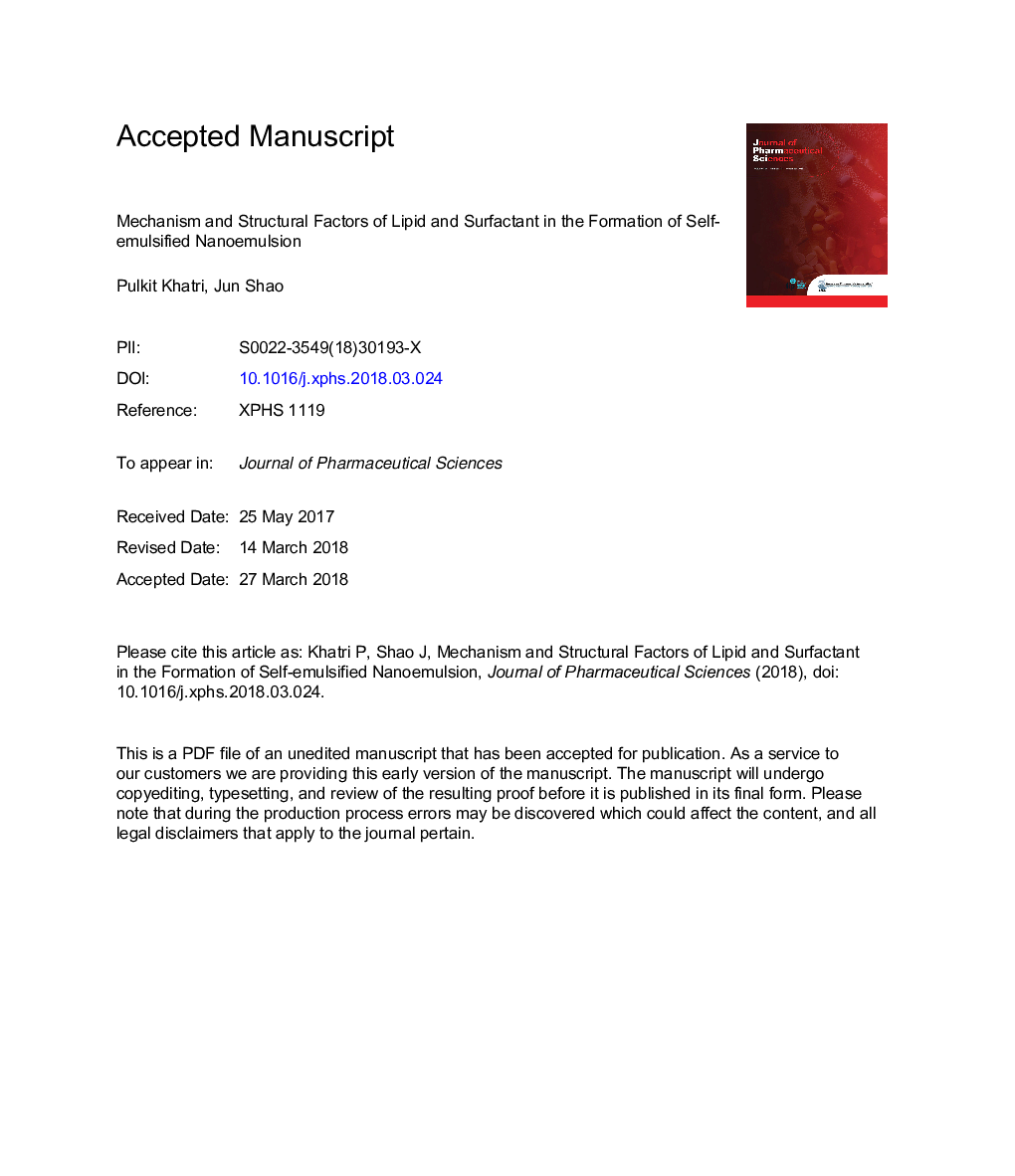| Article ID | Journal | Published Year | Pages | File Type |
|---|---|---|---|---|
| 8513154 | Journal of Pharmaceutical Sciences | 2018 | 37 Pages |
Abstract
The study aims to elucidate the mechanism and the role of the molecular structure of surfactants and lipids in the formation of oil-in-water (o/w) self-emulsified nanoemulsions (SENs). The hypothesis is that the overall change of Gibb's free energy (ÎGf) during the mixing of the lipid and surfactant, the formation of the interface between the lipid nanodroplets and water, and the dispersion of the lipid nanodroplets into the water are the determinants of the formation of SEN, which are the result of the intermolecular interactions between the excipients involved. Various lipids and surfactants of different structures were studied for the possible formation of SEN. The results demonstrate that the formation of SEN requires (1) enough hydrophobic attractions between the surfactant molecule and the lipid molecule, which can break up the lipid-lipid and surfactant-surfactant intermolecular binding forces and (2) the surfactant to be able to associate with enough water molecules which can effectively cover the lipid droplets' surface to prevent coalescence.
Keywords
Related Topics
Health Sciences
Pharmacology, Toxicology and Pharmaceutical Science
Drug Discovery
Authors
Pulkit Khatri, Jun Shao,
